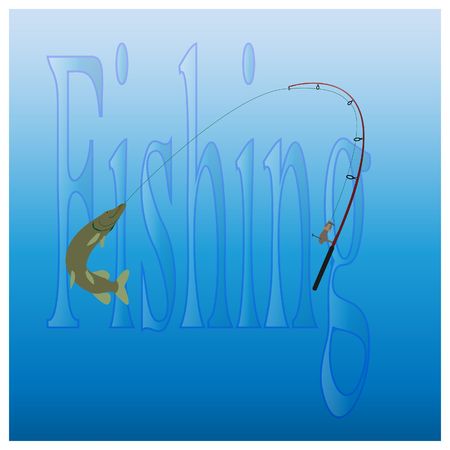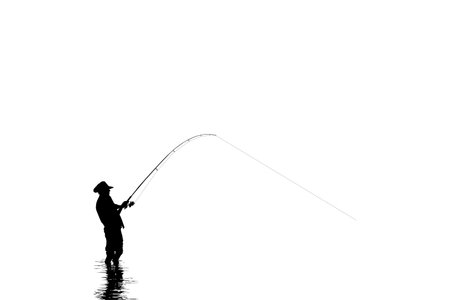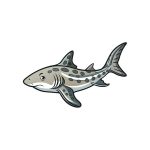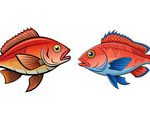1. Introduction to Wisconsin’s Wild Trout Waters
Wisconsin might not be the first place that comes to mind when you think of fly fishing, but for those in the know, it’s one of the best-kept secrets in the U.S. The state is home to over 13,000 miles of classified trout streams, with more than 5,000 miles designated as Class I wild trout waters—meaning they are naturally reproducing and dont require stocking. These waters offer a unique and exciting experience for anglers of all skill levels.
What sets Wisconsin apart is its diverse and healthy ecosystem that supports wild trout populations. Thanks to conservation efforts and clean water initiatives, many of these streams remain pristine, cold, and well-oxygenated—the perfect habitat for brook and brown trout. From hidden spring creeks nestled in rolling farmland to forested streambeds in the Driftless Area, the variety and accessibility of Wisconsin’s trout waters make it a top destination for fly fishing.
Why Fly Fish in Wisconsin?
- Abundant Access: Public lands and easements make many streams easy to reach.
- Wild Populations: Most trout are born and raised in the wild, offering a true angling challenge.
- Scenic Beauty: Rolling hills, limestone bluffs, and peaceful rural landscapes enhance the experience.
- Diverse Water Types: Choose from small spring-fed creeks to larger freestone rivers.
Types of Trout Found in Wisconsin
| Species | Description | Best Regions |
|---|---|---|
| Brook Trout | Wisconsins only native trout species; thrives in cold, clean headwaters. | Northern forests, Driftless Area |
| Brown Trout | Non-native but naturalized; often found in larger streams and rivers. | Driftless Area, Central Wisconsin |
| Rainbow Trout | Mainly stocked; less common in wild settings but present in some waters. | Southeast Wisconsin, select Class II/III streams |
The Driftless Area: A Fly Fishing Paradise
The Driftless Area—a region untouched by glaciers during the last Ice Age—is one of the most popular destinations for wild trout fishing in Wisconsin. This unique landscape features spring-fed creeks with limestone bedrock that keeps water temperatures cool year-round. Its an ideal habitat for trout and a favorite spot for fly anglers across the country.
Key Features of the Driftless Region:
- Limestone-rich geology filters water naturally
- Tight channels and undercut banks create excellent hiding spots for trout
- A wide range of hatches throughout the season—perfect for dry fly action
If youre looking to explore authentic wild trout fishing without heading west to Montana or Colorado, Wisconsin offers an unforgettable experience right here in the Midwest. With its combination of natural beauty, abundant access, and thriving fish populations, it’s easy to see why more anglers are discovering this hidden gem every year.
2. Top Wild Trout Streams in Wisconsin
Wisconsin is home to some of the most beautiful and productive wild trout streams in the Midwest. From the famous Driftless Area to hidden backcountry creeks, anglers can find a wide variety of waters teeming with naturally reproducing brook and brown trout. Whether youre a seasoned fly fisher or just getting started, these streams offer something for everyone.
The Driftless Area: A Fly Fishing Paradise
The Driftless Area in southwest Wisconsin is known for its spring-fed creeks, rolling hills, and limestone bluffs. This region avoided glaciation during the last Ice Age, which preserved its unique topography—perfect for coldwater fisheries. The area hosts hundreds of miles of Class I and II trout streams, where natural reproduction sustains healthy fish populations.
Top Driftless Streams
| Stream Name | Location | Trout Species | Access |
|---|---|---|---|
| Kickapoo River (West Fork) | Vernon County | Brook & Brown Trout | Easy public access, multiple parking areas |
| Pine River | Richland County | Mainly Brown Trout | Mix of public easements and walk-in access |
| Coon Creek | La Crosse County | Brook & Brown Trout | Good DNR-managed access points |
| Tainter Creek | Crawford County | Brown Trout | Accessible via public land and road crossings |
The Bois Brule River: Northwoods Legend
Nestled in northern Wisconsin near Lake Superior, the Bois Brule River is one of the state’s most iconic trout fisheries. Known simply as “The Brule,” this river runs through the Brule River State Forest and offers both spring-fed headwaters and faster-flowing lower sections. Anglers can expect wild brown trout in the upper stretches and steelhead closer to Lake Superior during seasonal runs.
Why Fish the Brule?
- Scenic Beauty: Surrounded by dense pine forests and clear waters.
- Diverse Water Types: From quiet pools to riffles and rapids.
- Limited Crowds: Especially during weekdays or early mornings.
- Regulated Sections: Special rules help protect fish populations—check before you go.
Lesser-Known Backcountry Gems
If youre looking to escape the crowds, Wisconsin has plenty of hidden gems tucked away in state forests and rural counties. These smaller streams often require more hiking or scouting but can reward you with solitude and untouched water.
Underrated Wild Trout Streams Worth Exploring
| Stream Name | Region | Description | Best Time to Fish |
|---|---|---|---|
| Kinnickinnic River (Upper Stretch) | St. Croix County (Western WI) | A spring-fed stream with clear water and wild browns; catch-and-release regulations apply in parts. | Early Spring through Fall; best on overcast days |
| Plover River Headwaters | Central WI (Marathon County) | A remote creek with small wild brookies; best accessed via hiking trails through forest land. | Late Spring when water levels stabilize after snowmelt |
| Namekagon River Tributaries | Northern WI (Bayfield/Washburn Counties) | Lesser-known branches hold surprising numbers of wild trout, especially brookies. | Sumer mornings or fall afternoons for active feeding windows. |
| Siskiwit River (South Fork) | Apostle Islands Region (Ashland County) | A short but scenic stream with native brook trout near Lake Superior shoreline forests. | Largely dependent on rainfall; best in early summer or after light rains. |
Pro Tip:
If youre heading into lesser-traveled areas, bring a detailed map or GPS device, wear proper wading boots, and always respect private property boundaries. Many of these streams have limited signage but are well worth the effort for adventurous anglers.
No matter your experience level, Wisconsin’s wild trout waters offer endless opportunities to explore pristine habitats while chasing beautiful native fish. Stay tuned for our next section covering proven techniques to maximize your success on these diverse streams.

3. Essential Gear and Techniques for Trout Fishing
Fishing for wild trout in Wisconsin’s streams is a rewarding experience, but having the right gear and using proven local techniques can make all the difference. Whether youre casting into the Driftless Areas spring-fed creeks or exploring forested northern waters, understanding what to bring and how to fish will set you up for success.
Must-Have Trout Fishing Gear
Wild trout in Wisconsin are often found in clear, cold, and sometimes narrow streams. That means stealth, precision, and properly sized equipment are essential. Here’s a breakdown of the key gear every angler should consider:
| Gear Item | Description | Recommended Specs |
|---|---|---|
| Rod & Reel | A lightweight spinning or fly rod suited for small streams | Spinning: 5-6 ft ultralight; Fly: 3-5 wt rod |
| Line | Sensitive line helps detect bites and control casts | Spinning: 2-6 lb test mono; Fly: Floating line with tapered leader |
| Lures/Flies | Mimic natural prey found in Wisconsin waters | Lures: Panther Martin, Mepps spinners; Flies: Caddis, Pheasant Tail Nymphs, Woolly Buggers |
| Waders & Boots | Stay dry and comfortable while navigating streams | Breathable chest waders; Felt or rubber-soled boots with good grip |
| Tackle Bag or Vest | Easily access tools and tackle on the go | Pockets for flies, forceps, tippet, floatant, etc. |
Wisconsin-Specific Trout Fishing Techniques
Catching wild trout here isn’t just about tossing a line in the water — it’s about matching your approach to the environment. Wisconsin’s geography plays a huge role in how you fish:
The Driftless Area (Southwest WI)
- Tight cover fishing: Streams are narrow and brushy — short casts and roll casting work well.
- Nymphing: Subsurface nymphs like Hares Ear or Prince Nymphs imitate aquatic insects common in these spring creeks.
- Dawn/Dusk Action: Trout feed actively during low light—ideal times for dry fly action.
Northern Forest Streams (e.g., Chequamegon-Nicolet National Forest)
- Larger stream access: Slightly wider than southern creeks — longer rods can help here.
- Swinging streamers: Use Woolly Buggers or Muddler Minnows to mimic sculpin and baitfish.
- Casting accuracy: Overhanging branches mean side-arm casts and pinpoint placement are key.
Central Sand Counties (e.g., Waushara County)
- Crawling approach: Clear water makes trout spooky—stay low and move slow.
- Bait finesse: In regulated areas that allow bait, natural offerings like worms work well when drifted naturally.
Tactics for Success Year-Round
The seasons affect both trout behavior and fishing techniques. Here’s a quick guide to help you adjust your approach throughout the year:
| Season | Tactics |
|---|---|
| Spring (March – May) | Nymphs and small streamers; watch for early hatches like Blue Wing Olives |
| Summer (June – August) | Dawn/dusk dry fly fishing; terrestrial patterns like ants and beetles near banks |
| Fall (September – November) | Larger streamers for aggressive pre-spawn strikes; fewer anglers on the water means less pressure |
No matter where you go in Wisconsin, adapting your gear and technique to match local conditions will greatly increase your chances of hooking into beautiful wild trout. Remember to always check local regulations before heading out—and enjoy the adventure each stream has to offer!
4. Seasons and Timing: When to Fish Wisconsin’s Wild Trout
Trout fishing in Wisconsin isn’t just about picking the right stream or using the best fly—timing is everything. Understanding how the seasons affect trout behavior and stream conditions can make all the difference between a slow day and an unforgettable one. Here’s what you need to know about when to hit Wisconsin’s wild trout waters.
Wisconsin Trout Fishing Season Overview
Wisconsin has a structured trout season set by the Department of Natural Resources (DNR), which helps protect fish populations and maintain healthy ecosystems. Below is a general breakdown of the trout fishing season:
| Season | Dates | Notes |
|---|---|---|
| Early Catch and Release | First Saturday in January – First Sunday in May | Artificial lures only, barbless hooks recommended, catch-and-release only |
| General Inland Trout Season | First Saturday in May – October 15 | Regular harvest season with daily bag limits; bait allowed unless otherwise posted |
| Extended Fall Catch and Release | October 16 – November 15 (select streams) | Certain areas remain open for artificial-only, catch-and-release fishing |
Seasonal Weather Patterns and Their Impact on Trout
Trout are highly sensitive to water temperature, oxygen levels, and light conditions. As seasons change, so does trout behavior:
Spring (March–May)
This is one of the best times to fish for wild trout as they become more active after winter. Snowmelt increases flow, which can be both good and bad—more oxygenated water means more feeding, but high flows may make wading tough.
Summer (June–August)
As temperatures rise, trout seek cooler, deeper water. Early mornings and late evenings are prime times to fish. Look for shaded areas or spring-fed creeks that stay cooler year-round.
Fall (September–November)
This is spawning season for brown and brook trout. They become aggressive and territorial, making them easier to target with streamers or egg patterns. The scenery is also unbeatable during this time of year.
Winter (December–February)
The bite slows down significantly in winter, but die-hard anglers can still find success during warmer midday hours. Focus on deep pools where trout conserve energy.
Best Times of Day for Trout Fishing
| Time of Day | Why It Works |
|---|---|
| Dawn (5 AM – 8 AM) | Cool temps and low light make trout more active near the surface |
| Lunch Hours (11 AM – 1 PM) | In colder months, this window offers peak warmth and activity |
| Dusk (6 PM – Sunset) | Bugs hatch during twilight; ideal for dry fly action in summer |
Stream Conditions to Watch For
The condition of the stream can make or break your trip. After heavy rains, streams may be muddy and fast-flowing—tough conditions for both you and the trout. On the flip side, low water in late summer can make trout skittish and hard to approach without spooking them.
Tips for Reading Stream Conditions:
- Clarity: Clear water = spooky trout; cloudy water = better cover for anglers.
- Flow Rate: Moderate flows are ideal; extreme highs or lows usually mean tougher fishing.
- Temperature: Best range is between 50°F and 65°F for active feeding behavior.
If you plan your trip around seasonal patterns and pay attention to stream conditions, you’ll dramatically increase your odds of landing some beautiful wild trout in Wisconsin’s legendary waters.
5. Rules, Regulations, and Conservation Practices
Before you hit the streams in Wisconsin, it’s important to understand the state’s fishing rules and how they help protect wild trout populations. Whether youre a seasoned angler or just starting out, following regulations not only helps preserve the natural ecosystem but also ensures great fishing experiences for years to come.
Catch-and-Release Areas
Some streams in Wisconsin are designated as catch-and-release only. In these areas, all trout caught must be immediately returned to the water unharmed. These zones help maintain healthy fish populations by reducing harvest pressure on wild trout.
Examples of Catch-and-Release Streams:
| Stream Name | County | Species Protected |
|---|---|---|
| Timber Coulee Creek | Vernon County | Brook & Brown Trout |
| Black Earth Creek (Upper) | Dane County | Brown Trout |
Barbless Hook Zones
In certain waters, anglers are required to use barbless hooks. This regulation makes it easier to release fish without injury, increasing their chances of survival. Barbless hooks are especially encouraged in sensitive habitats where wild trout populations are more vulnerable.
Licensing and Season Dates
Wisconsin requires a valid fishing license and inland trout stamp for anyone fishing for trout. The general inland trout season typically runs from early May through mid-September, with some special regulations allowing earlier catch-and-release fishing.
Quick Licensing Info:
| License Type | Resident Fee | Non-Resident Fee |
|---|---|---|
| Annual Fishing License | $20 | $50 |
| Trout Stamp (Required) | $10 | $10 |
Ethical Angling Tips for Conservation
- Handle with Care: Always wet your hands before touching a trout to avoid removing its protective slime coating.
- Use Proper Gear: Use appropriate tackle to land fish quickly and reduce stress.
- Avoid Sensitive Times: Don’t fish during extreme heat or low water conditions when trout are most stressed.
- Leave No Trace: Pack out all trash and avoid trampling stream banks or spawning grounds.
Respecting the rules and practicing ethical angling ensures that Wisconsins wild trout waters remain healthy and productive for future generations of anglers.
6. Local Insights and Planning Your Fishing Trip
Planning a trout fishing trip to Wisconsin? Getting the most out of your adventure means tapping into local knowledge, understanding where to go, and knowing what to expect. From fly shops to public access points, here’s how you can make your trip smooth, enjoyable, and successful.
Connect with Local Fly Shops and Guides
One of the best ways to get up-to-date information on stream conditions, hatches, and gear recommendations is by visiting local fly shops. These spots are often run by experienced anglers who know the nearby waters like the back of their hand. Many also offer guided trips, which can be especially helpful if youre new to the area or want a more in-depth experience.
Popular Fly Shops in Wisconsin Trout Country
| Fly Shop | Location | Services Offered |
|---|---|---|
| Driftless Angler | Viroqua | Gear, guided trips, local advice |
| Orvis Milwaukee | Milwaukee | Gear, classes, fly tying materials |
| Tight Lines Fly Fishing Co. | De Pere (Green Bay Area) | Guided trips, gear rentals, casting lessons |
Lodging Options: Where to Stay
You’ll find everything from rustic cabins near remote streams to comfortable hotels in trout towns like Viroqua or Westby. Some lodges even cater specifically to anglers with gear storage and early breakfast options.
Lodging Types for Every Angler
| Lodging Type | Description |
|---|---|
| Fishing Lodges | Catered to anglers with amenities like rod racks and streamside locations |
| Airbnb/Cabin Rentals | Great for small groups or families looking for privacy and flexibility |
| Campsites & State Parks | Budget-friendly and close to nature; some located right on trout streams |
Know Your Access Points
Wisconsin has thousands of miles of classified trout streams, many of which are accessible thanks to public easements and state-managed lands. Look for signage marked “Public Fishing Easement” or use DNR maps and apps like OnX Hunt or TroutRoutes to plan your access legally and respectfully.
Tips for Finding Public Access:
- Use the Wisconsin DNR’s online trout maps (available by county)
- Look for yellow signage indicating public easement areas along roadsides
- Avoid crossing private land without permission—respect all posted signs
Backcountry Etiquette: Respect the Land and Water
The beauty of fishing in Wisconsins wild trout waters is getting off the beaten path—but it comes with responsibility. Follow Leave No Trace principles and be considerate of landowners and fellow anglers.
Angler Etiquette Checklist:
- Pack it in, pack it out: Don’t leave any trash behind—not even tippet clippings.
- Close gates behind you: If crossing through farm country, always leave gates as you found them.
- Avoid crowding: Give other anglers space—if a spot looks taken, move upstream or downstream.
- No trespassing: Always confirm that you’re on public land or have permission before fishing.
Your Trip Starts with Good Planning
A little preparation goes a long way when exploring Wisconsin’s trout country. With so many hidden gems scattered across the Driftless Area and beyond, doing your homework before hitting the water ensures a better time on the stream—and helps preserve these special places for everyone else too.


